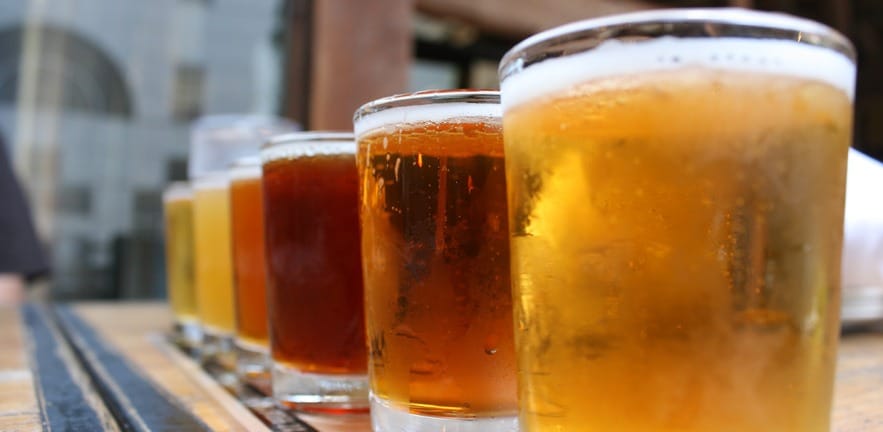What has the Dutch brewing industry done for us? Well, for a start, it produces some great beer. But for entrepreneurs, the industry’s development in recent years may also have some big lessons on how a mature market can benefit from flux.

Not all mature industries renew and revitalise themselves, so working out why some do (and others don’t) is crucial. Dr Jochem Kroezen, Lecturer in International Business at Cambridge Judge Business School, has completed a major study of the Dutch beer brewing industry, which sheds light on how and why entrepreneur-led renewal is possible in some mature industries.
“Cambrian explosion”
The Dutch beer industry has a long history, dating back to the Middle Ages. By the 17th century, there were hundreds of breweries in the Netherlands, producing many different types of beer for domestic and export markets. But during the 20th century, a handful of brewers supersized, mostly through acquisition and driving smaller competitors out of business. The number of independent producers fell from around 500 in 1900 to 100 in 1940 – and just 13 in 1980. By then, from a beer lover’s point of view, the industry had become a “Pilsner desert”, as Kroezen describes it: largely homogenous in terms of working practices and products. It was also almost completely bereft of entrepreneurial activity, with no new breweries having been founded in 50 years.
Today, following what Kroezen describes as a “Cambrian explosion” of new organisations and products, there are around 300 brewers in the Netherlands, producing a huge variety of beers, including many ales of the type that might be termed “craft beer” in the US or UK. Independent breweries still only have a collective market share of between 5 per cent and 10 per cent, but they have had a significant influence on consumer tastes, encouraging larger brewers to adopt some of their methods and diversify their products.
So what happened? Kroezen’s explanation for this renaissance focuses on the creative and strategic use existing infrastructures, and the successful activities of groups of entrepreneurs within the “rebirth” process.
Industry renewal
In terms of infrastructure, Kroezen’s research shows that new breweries were more likely to have been founded in municipalities that had been the site of previous breweries, drawing on pre-existing tradition. New organisations tended to use “technical and cultural organisational detritus”, including old equipment, brewery buildings and recipes; and the labour of talented individuals such as brew masters. For example, the Jopen brewery in Haarlem, founded in 1992, uses beer recipes found in city archives, including one dating from 1407.
Kroezen also tried to establish why entrepreneurs were inspired to act in an environment where high barriers to entry meant they were unlikely to enjoy large personal financial rewards. He identified three different groups of entrepreneurs. First were a group with some kind of scientific background, in fields such as food science, or in brewing itself.
A second group usually had some kind of prior connection to the beer industry and spotted an opportunity to restore local traditions. Kroezen proposes that industry renewal through the production of entrepreneurs is more likely in an industry harbouring individuals seeking to implement alternative or historic working methods. Although the Dutch beer brewing industry around 1980 was largely controlled by managers with sales and finance backgrounds, he writes: “brew masters, consumers and brewers’ families with alternative ideas … grasped the opportunity to regain more central positions when there was growing demand for alternative beer.”
Finally, a third group of entrepreneurs were also inspired by the revival of more varied brewing methods: enthusiasts who started to brew beer as a hobby and eventually moved towards producing beer on a professional basis.
An important role in mobilising all these entrepreneurs was played by the organisation Promotie Informatie Traditioneel Bier (PINT), which was inspired by the British Campaign for Real Ale (CAMRA). “They created networks for information sharing, bringing people together to learn how to brew beer,” says Kroezen, “They started hosting beer festivals and published magazines. All these activities inspired people to become entrepreneurial.”
The possibility of change
Kroezen wonders whether social movements along the lines of PINT might help to drive change within other mature industries. “If you want change and renewal it comes from the bottom up, from new organisations,” he says. “Cultures are very difficult to change within large organisations.”
He suggests that if it is difficult for alternative working methods to emerge within a mature industry, policymakers should encourage accumulation and dissemination of knowledge about alternatives – just as Dutch entrepreneurs learned from the work of UK and Belgian brewers and researched historic Dutch brewing practices.
But motivation and resources for entrepreneurs are crucial. “They need to care,” he says. “Any real change is a long-term process. The majority of the first movers are not going to make much money. But renewal of the Dutch beer brewing industry is an example of how, if you want change, you can accomplish it.”
Kroezen’s conclusion is that the Dutch beer industry of the early 1980s, an industry that appeared to be creatively moribund, actually contained the seeds of its own renewal. He further suggests that similar renewal could be achieved within other mature industries currently facing social pressure to renew themselves, such as parts of the financial, energy or food industries, where links with local communities have been lost through consolidation and centralisation of corporate organisations.
Image credit
Beer sampler.
Credit: Photo by Quinn Dombrowski
This work is licensed under a Creative Commons Attribution-ShareAlike 2.0 Generic (CC BY-SA 2.0) License



